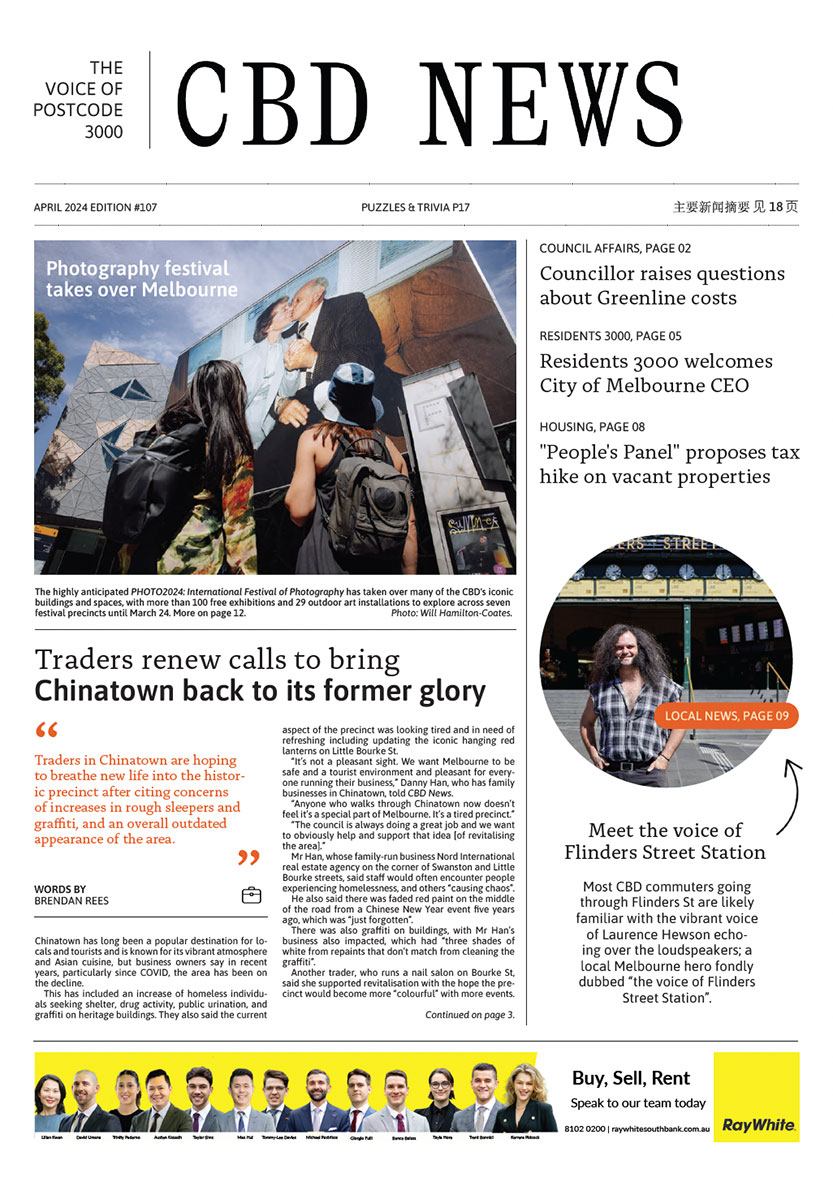A green transformation of our city
Advertorial by Sean Car
Director of City Design and Projects at the City of Melbourne, Professor Rob Adams, knows that changing the city doesn’t happen overnight.
The lead architect and urban planner has been helping drive the vision for sustainable development in the city since the 1980s.
With inner-Melbourne’s population forecast to double by 2040, the need to provide more open space for a growing city and mitigate the impacts of climate change have never been more important.
While Prof Adams said the city’s transformation from a relatively empty CBD in the 1980s was “remarkable,” there was still a long way to go to address our most significant challenges.
“We’ve got two real problems in Melbourne. The really big hairy ones are rapid population growth and climate change,” he said.
“I don’t want to demean any of the other things we’re doing but if we don’t deal with those two, the other things are going to become more and more acute anyway. That’s where we’re heading.”
When developing its Open Space Strategy nearly 10 years ago, the City of Melbourne identified that in order to manage population growth, the equivalent of $700 million in open space would need to be purchased.
Naturally, without that sort of money lying around, a different approach was required to find more space, which is where the resolve to reuse and repurpose underutilised assets, such as roads, which started on a small scale in the 1980s, was now ramped up.
While the council has a number of greening initiatives and strategies it is rolling out across the city, Prof Adams caught up with CBD News last month in Southbank, where one city boulevard is currently being transformed on a large scale.
“People would be surprised to hear us say ‘underutilised’ but Southbank Boulevard is an example,” Prof Adams said. “When the bottom of Southbank Boulevard was closed during the Commonwealth Games to create Queensbridge Square, traffic dropped off from 30,000 to 13,000 cars a day. So, there is an opportunity to recalibrate that space.”
And that’s exactly what council is doing. By closing half the road between City and St Kilda roads, a new 2.5-hectare linear park, complete with new bike lanes, wider footpaths and outdoor spaces for the community to enjoy, is being created.
A historic example of this strategy in action includes the reclamation of land from former railyards and roadway to create eight hectares of new open space at Birrarung Marr next to Federation Square. Other current transformations include the closure of two streets to create a bigger University Square in Carlton, as well as the closure of Market St to create a new park in the CBD as part of the new Collins Arch development.
“Never in my wildest dreams did I think we would be transforming more than half of Southbank Boulevard and taking over two local roads to expand University Square,” Prof Adams said. “I thought it would be change on a much lesser scale but it has built momentum and people have seen the benefits.”
“We’re a bit of a pilot for the rest of metropolitan Melbourne and even other global cities. We didn’t expect to become a pilot but even cities like New York, through Jan Gehl, sought our advice and have followed our approach for taking roadway to extend public space for people.”
In addition to building new parks, such as Boyd Park in Southbank or Ron Barrassi Snr Park in Docklands, greening the CBD’s laneways and rooftops, expanding our urban forest and investing in renewable energy, the city is making a good fist of fighting climate change.
But while pointing out that Melbourne still had a long way to go to becoming a carbon neutral city, he said the City of Melbourne, with the support of the community, was doing everything in its power to get there.
“The beauty of having an ambition target is that opportunities will come along and allow you to realise it. We’ve got a zero-carbon policy to achieve by 2030. Will we actually get there? I’m not sure, just as in 1985 we were not sure we would get 8000 new residents to live downtown; well, we overachieved that target so I have every confidence, with the help of our communities and other agencies, that we can achieve this urgent target.”

Experts gather to discuss “city-shaping” Greenline project






 Download the Latest Edition
Download the Latest Edition